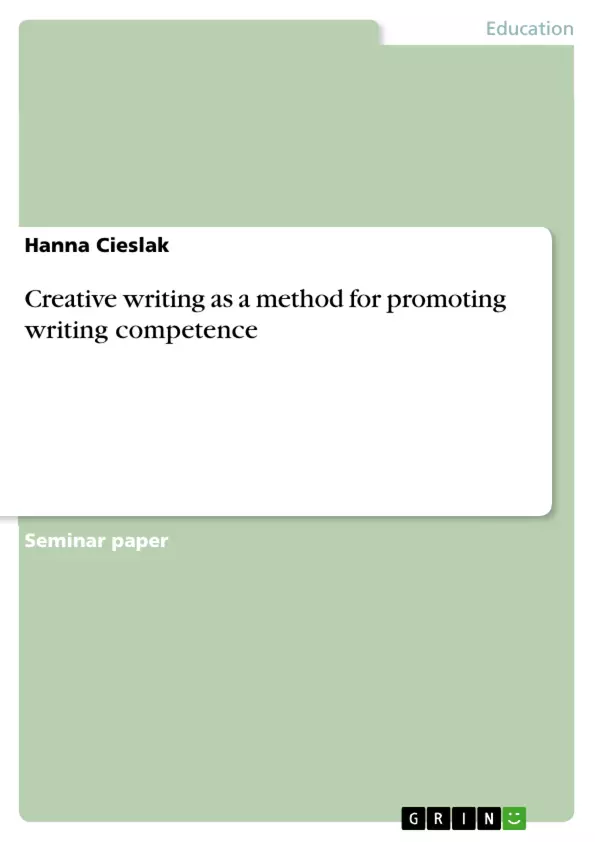Reading and writing are central key competences of everyday life in society. Without the corresponding skills, it is becoming increasingly difficult to participate in life in our literate society. Teaching writing skills to pupils (in short: SuS) is thus a fundamental task of school education and upbringing.
Based on these findings, this thesis attempts to show to what extent creative writing methods can promote writing among students. In the first chapter, the field of "writing" itself is explained in more detail. In this context, the first step is to show theoretically what is meant by the term "writing process". Then the area of writing strategies is discussed. The focus of this chapter is on writing competence, which entails a definition of this term and explains the different levels of competence. However, writing competences are not only closely related to the writing process and writing strategies, but also to writing development. In this context, BECKER-MROTZEK/BÖTTCHER have tried to divide the process of writing development into different levels of development, which are presented in conclusion.
The second chapter deals with the field of "creative writing". After defining the term "creative writing" and explaining the aims of using this method, the six method groups of creative writing are presented, based on BÖTTCHER. Finally, this chapter is dedicated to the question of whether creative writing actually promotes the students' writing competence? In this context, an attempt is made to analyse, on the basis of selected student essays, whether these contain, for example, certain text patterns, lexical or grammatical knowledge, which are components of writing competence and can be further developed through creative writing occasions.
Inhaltsverzeichnis (Table of Contents)
- Introduction
- Theoretical foundations on the topic of "writing"
- Writing process
- Writing strategies
- Writing skills
- Concept of competence
- Approaching a definition of writing competence
- Competence levels
- Writing development
- Creative writing
- Definition
- Goals of creative writing
- Methods of creative writing
- Promotion of writing competence through creative writing occasions using the example of selected student texts.
- Conclusion
Zielsetzung und Themenschwerpunkte (Objectives and Key Themes)
This work explores the effectiveness of creative writing methods in promoting writing skills in students. The study aims to shed light on how creative writing techniques can enhance students' writing abilities and contribute to their overall writing competence.
- The writing process
- Writing strategies and competence
- Creative writing methods and their application
- The impact of creative writing on writing skills
- Analyzing student texts to assess the effectiveness of creative writing methods
Zusammenfassung der Kapitel (Chapter Summaries)
The first chapter delves into the theoretical foundations of writing, focusing on the writing process, writing strategies, and writing competence. It examines the concept of competence and outlines various levels of competence. It also explores the process of writing development.
The second chapter focuses on creative writing. It defines the concept of creative writing and outlines its goals. The chapter explores the six groups of creative writing methods developed by COOPER. It then investigates whether creative writing actually promotes writing skills by analyzing selected student essays.
Schlüsselwörter (Keywords)
The primary keywords and focus topics of this work include writing competence, writing process, writing strategies, creative writing, methods of creative writing, student texts, and the impact of creative writing on writing skills.
- Quote paper
- Hanna Cieslak (Author), 2008, Creative writing as a method for promoting writing competence, Munich, GRIN Verlag, https://www.grin.com/document/1161865



